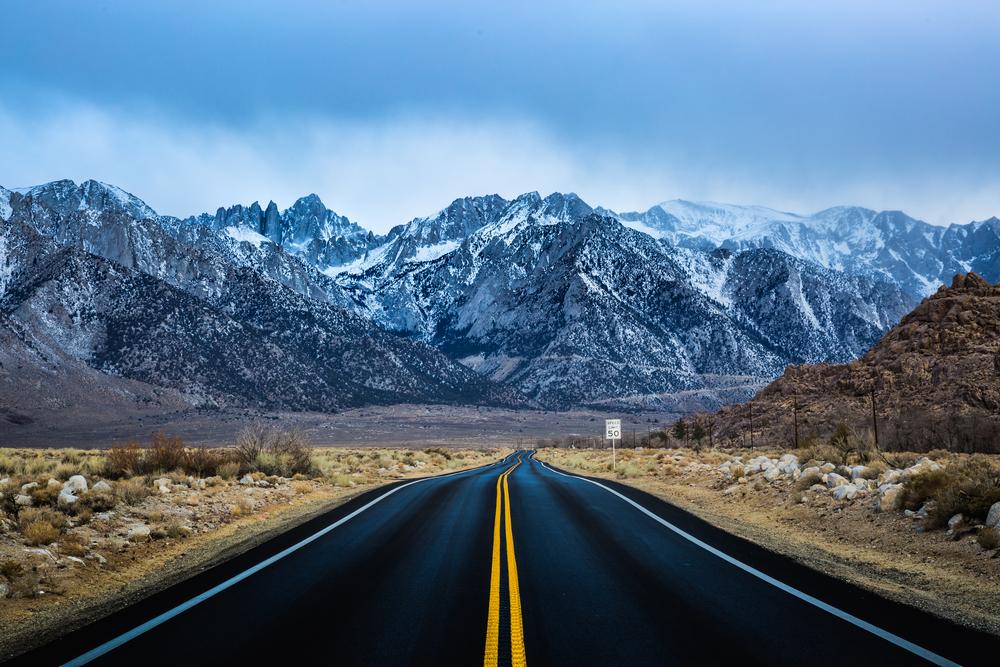Tahoe seems like a long time ago. With the blacktop slicing through the desert before me, through my windshield—the sole, man-made interruption slashing through this barren, rugged landscape of brown, beige, and the occasional swipe of pink—I descend into the heat.
Around me, I can almost feel the thermals rising from the bottom of the valley, despite the fact that I’ve cranked the AC to the max. Ahead, sits Badwater Basin, the ultimate low—on this route, and in the entire country. It’s the end point of a trip that’s been filled with so many highs, all along the way.





